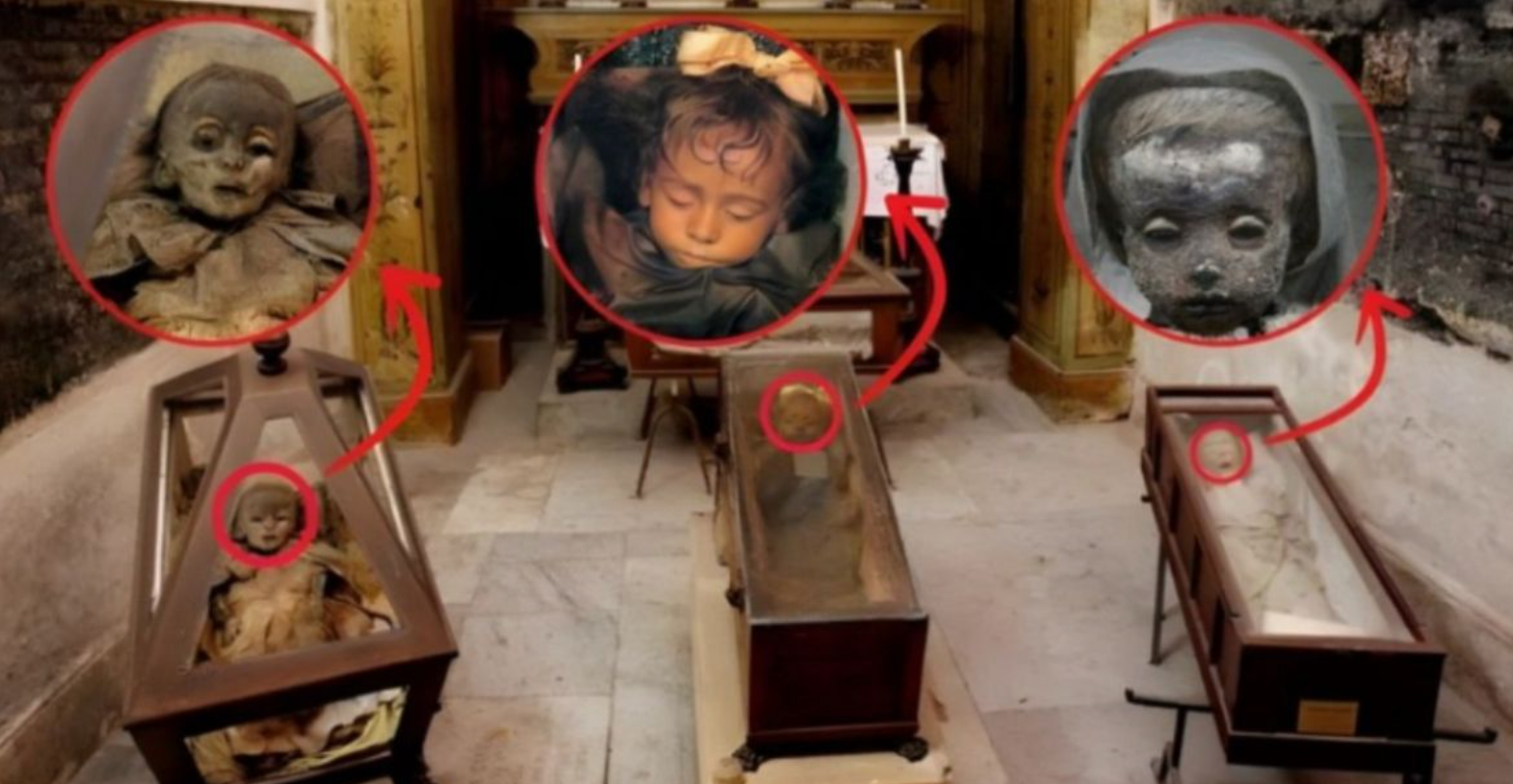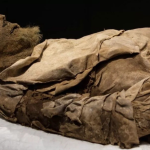Macabre Discovery: Investigating the Mystery of Mummy Children in the Capuchin Catacombs – Researchers on a Mission to Reveal Their Untold Stories
- mystery
- June 13, 2024

Beneath the bustling streets of Palermo, Sicily, lies a subterranean world steeped in history and enigma—the Capuchin Catacombs. This eerie burial site, dating back to the 16th century, houses the remains of thousands, meticulously preserved through unique mummification techniques. Among these ancient remains, a particularly poignant and mysterious subset stands out: the mummy children. Their presence has intrigued and haunted both visitors and researchers, prompting a dedicated mission to uncover the untold stories of these young souls.
The Capuchin Catacombs are renowned for their macabre display of mummified bodies, arranged in lifelike poses along the dimly lit corridors. Among the rows of adults in monks’ robes, aristocrats in their finest attire, and commoners in everyday clothes, lie the mummified children, some cradled in their final rest, others dressed in delicate clothing, frozen in time.

Dr. Alessandra Rossi, a leading expert in historical anthropology, has spearheaded an international team of researchers dedicated to unraveling the mysteries of these mummy children. “These children were carefully mummified and dressed, indicating they held significant importance in their communities,” Dr. Rossi explains. “Our goal is to understand who they were, how they lived, and the circumstances of their deaths.”
To piece together their stories, the team employs a multidisciplinary approach, combining advanced technology with traditional archaeological methods. High-resolution imaging and 3D scanning allow researchers to examine the mummies without disturbing their fragile remains. This non-invasive analysis reveals details about their health, diet, and the diseases they might have suffered. Preliminary findings suggest that some of these children were victims of malnutrition and infectious diseases common in their era.

Genetic testing plays a crucial role in this investigation. DNA extracted from the mummified tissues provides insights into their familial relationships and ethnic backgrounds. These genetic markers help researchers trace the children’s lineage and connect them to broader historical narratives. Early results indicate a diverse genetic heritage, reflecting the complex social fabric of Palermo during the time.
Historical records and local archives complement the scientific analysis. Researchers delve into the Capuchin friars’ meticulous documentation, which includes names, dates, and occasionally, the causes of death. These records offer glimpses into the lives of these children and their families, painting a picture of the community that revered them in death.

One of the most heart-wrenching discoveries is the story of Rosalia Lombardo, known as the “Sleeping Beauty.” Rosalia, who died at the tender age of two in 1920, is among the last to be interred in the catacombs. Her remarkably preserved body, with a serene expression and lifelike appearance, has captivated millions. Her preservation is attributed to the embalming techniques of Dr. Alfredo Salafia, whose formula remains a closely guarded secret.
The mummy children of the Capuchin Catacombs represent more than a historical curiosity; they are a window into the past, offering profound insights into the lives, beliefs, and struggles of the people who lived centuries ago. Through their meticulous study, researchers aim to honor their memory and shed light on the social, cultural, and medical history of the period.

The mission to uncover the untold stories of these mummy children is ongoing, with each discovery adding a piece to the intricate puzzle of their existence. As the team continues their work, they hope to bring these silent figures’ stories to the forefront, ensuring that their legacy endures beyond the shadowy corridors of the catacombs.
In the depths of the Capuchin Catacombs, where time stands still, the mummy children await their stories to be told. Through the dedication of Dr. Rossi and her team, these young lives, once lost to history, are finally finding their voice, illuminating the past in a way that resonates with the present and informs the future.










